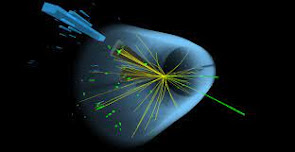The exploration of the Higgs boson and the origin of mass.
The Higgs boson is a subatomic particle that plays a critical role in the Standard Model of particle physics. Discovered in 2012 by the Large Hadron Collider (LHC) at CERN, the Higgs boson is responsible for giving mass to all other particles in the universe. This discovery was the result of decades of theoretical and experimental work and has revolutionized our understanding of the universe and its origins.
The Standard Model is a theoretical framework that explains the behavior of subatomic particles and their interactions with each other. It describes the universe in terms of elementary particles, which are the building blocks of matter. The Standard Model consists of three types of particles: fermions, which make up matter; bosons, which mediate the fundamental forces of nature; and the Higgs boson, which gives mass to all other particles.
The Higgs boson was first proposed by British physicist Peter Higgs in the 1960s as a solution to the problem of mass. The Standard Model did not provide an explanation for why particles have mass, and Higgs proposed that the universe is filled with a field known as the Higgs field. Particles interact with this field, which gives them mass. The Higgs boson is the particle associated with this field.
The discovery of the Higgs boson was a major scientific achievement that confirmed the existence of the Higgs field and provided evidence for the mechanism by which particles acquire mass. The discovery was made possible by the construction of the Large Hadron Collider, a particle accelerator located at CERN in Switzerland.
The LHC is the largest and most powerful particle accelerator in the world. It consists of a 27-kilometer circular tunnel that accelerates protons to nearly the speed of light and smashes them together. When particles collide, they release energy that can be used to create new particles, including the Higgs boson.
The discovery of the Higgs boson was announced in July 2012, following two years of data collection and analysis. The announcement was the result of a collaboration between thousands of scientists from around the world who had been working on the project for decades.
The discovery of the Higgs boson has many implications for our understanding of the universe. It confirms the existence of the Higgs field, which is a fundamental part of the Standard Model. It also provides evidence for the mechanism by which particles acquire mass. The Higgs boson is the missing piece of the Standard Model, and its discovery completes our understanding of the fundamental particles and forces of nature.
The Higgs boson is also important for our understanding of the early universe. The Higgs field played a critical role in the evolution of the universe following the Big Bang. As the universe expanded and cooled, the Higgs field began to interact with other particles, giving them mass and allowing them to form into atoms and other structures. Without the Higgs boson, the universe as we know it would not exist.
In conclusion, the discovery of the Higgs boson has revolutionized our understanding of the universe and its origins. It confirms the existence of the Higgs field and provides evidence for the mechanism by which particles acquire mass. The Higgs boson is a critical part of the Standard Model of particle physics and has many implications for our understanding of the early universe. The discovery of the Higgs boson was a major scientific achievement and a testament to the power of human curiosity and exploration.





0 Comments:
Post a Comment
Subscribe to Post Comments [Atom]
<< Home